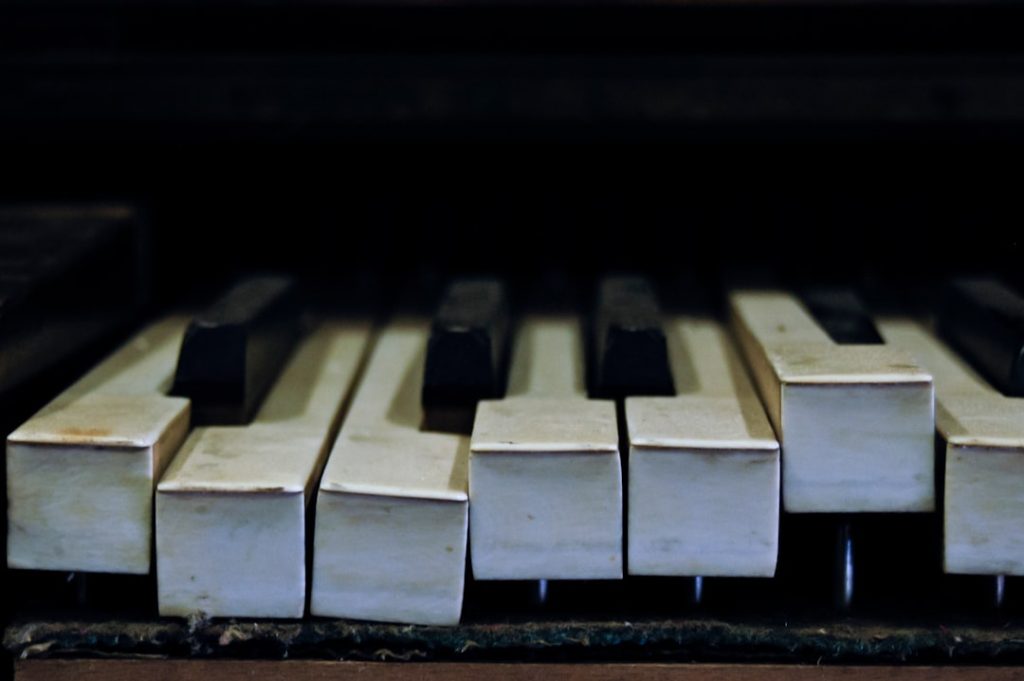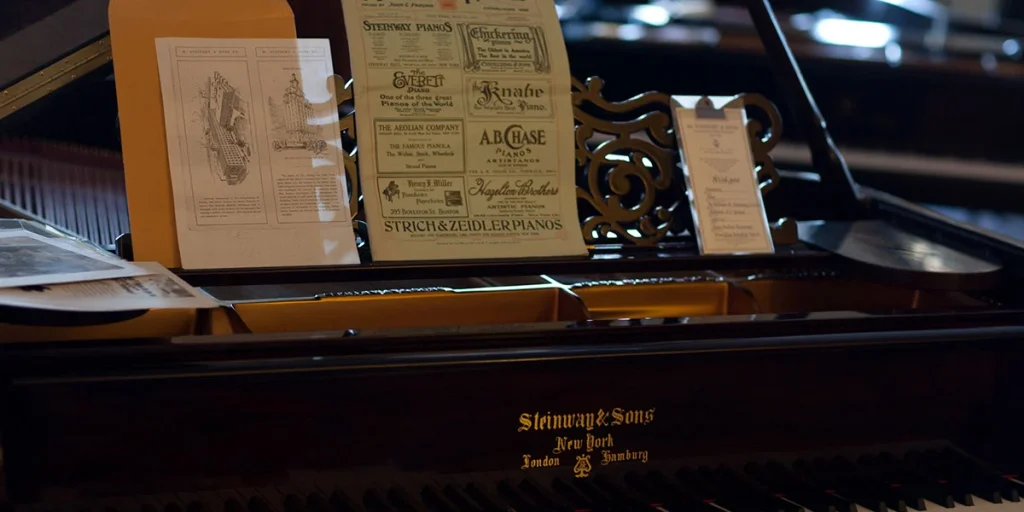Blog
What to Look for When Buying a Used Piano
Purchasing a used piano can be a great way to get a quality instrument at a more affordable price, but it comes with its own set of challenges. Pianos, especially acoustic ones, are intricate and delicate instruments, so buying a used one requires careful inspection to ensure you’re getting a good deal. Whether you’re a beginner or a seasoned pianist, knowing what to look for can help you avoid costly repairs and frustration down the line. Here’s a guide to help you navigate the process of buying a used piano.
1. Assess the Piano’s Condition
The first thing to check is the overall condition of the piano. Both acoustic and digital pianos can have issues, and the condition can vary significantly depending on how well the piano was cared for.

Acoustic Pianos:
- Exterior and Finish: Look for any scratches, dents, or significant damage to the piano’s outer casing. While minor cosmetic issues are normal, large dents or peeling wood can be a sign of neglect.
- Pedals: Test the pedals (usually three for a full-size piano) to ensure they work properly. The sustain pedal, in particular, should feel responsive and not stick.
Digital Pianos:
- Cosmetic Condition: Check for physical damage to the keyboard or casing. Scratches, cracked keys, or a damaged display could affect the usability of the instrument.
- Power Functionality: Ensure the power button works and that the piano turns on without any issues.
2. Inspect the Piano’s Action and Keys
The action (the mechanism that connects the keys to the hammers) plays a critical role in how the piano feels when played. For acoustic pianos, the action also impacts how the piano responds to touch, affecting both playability and sound.
Acoustic Pianos:
- Key Movement: Press each key to ensure they move smoothly and don’t feel sticky or uneven. A good piano should have a consistent feel across all keys.
- Hammer and String Condition: While this might require a technician’s expertise, it’s important to listen for any unusual sounds or resonance issues when playing. If you notice any keys that feel significantly heavier or lighter than others, it could indicate an action problem.
Digital Pianos:
- Key Response: Test all the keys to make sure they respond correctly. For weighted digital pianos, the keys should mimic the feel of an acoustic piano, with resistance that varies across the keyboard.
- Touch Sensitivity: Many digital pianos have velocity-sensitive keys, meaning the volume of the note depends on how hard you press the key. Test this by playing soft and loud notes to ensure the sensitivity is working properly.
3. Check the Tuning and Sound Quality (For Acoustic Pianos)
A piano’s tuning is one of the most important factors when assessing its condition, especially for an acoustic piano. If the piano is out of tune, it could be a sign of neglect or that it hasn’t been maintained regularly. Even if the piano sounds good, poor tuning could indicate that the piano has not been used in a while or hasn’t been cared for properly.
- Listen for Out-of-Tune Notes: Play each note from low to high, listening for any out-of-tune or muffled notes. Significant tuning issues could mean you’ll need to pay for repairs.
- Check for Evenness: Play scales and listen for any notes that seem uneven in volume or sound, which may indicate problems with the piano’s soundboard or action.
Digital Pianos:
- Sound Quality: Check that the sound is clear and consistent when played. Ensure that no keys produce distorted or muffled sounds. Listen for any buzzing or rattling noises when playing at different volumes.
- Speakers and Output: Test the built-in speakers, or if you’re using headphones, ensure the headphone jack is working properly.
4. Inspect the Piano’s Environment and Maintenance History
Before committing to a used piano, ask the seller about its history and any maintenance or repairs it has undergone. If the piano has been properly cared for, it should last for many years with minimal issues.
- Age of the Piano: The age of the piano can give you an idea of its potential lifespan and maintenance needs. While pianos can last for decades, the condition of the parts may deteriorate over time. For instance, older pianos may have issues with strings, hammers, and soundboards.
- Maintenance Records: If the seller has records of any tuning, repairs, or professional maintenance, this can help you assess the condition and upkeep of the piano.
- Previous Environment: Find out where the piano was kept. Pianos should be stored in climate-controlled environments to prevent damage from humidity and temperature fluctuations. A piano kept in a damp basement or attic could have issues with rust, mold, or warping.
5. Play the Piano and Test for Overall Sound Quality
Testing the piano is one of the most important steps when buying a used piano. Play as much of the keyboard as possible and listen closely to the quality of the sound.

For Acoustic Pianos:
- Tone Quality: Play different notes at various volumes to assess the tone quality. The sound should be rich, clear, and even across the keyboard. If there are any dead or muffled notes, it could be an indication of a damaged soundboard or strings.
- Dampers and Sustain: Check if the sustain pedal works properly. When you press it, the notes should continue to resonate, and the sound should not cut off too quickly. This will indicate the condition of the dampers inside the piano.
For Digital Pianos:
- Sound Clarity: Listen for clarity and richness of sound. Make sure all pre-programmed tones sound clear and natural. Poor sound quality may suggest outdated or low-quality digital sound engines.
- Functionality of Additional Features: Test any extra features, such as volume control, reverb, metronome, or Bluetooth connectivity. These should work without glitches.
6. Evaluate the Price and Seller’s Reputation
Once you’ve assessed the condition of the piano, it’s important to evaluate whether the asking price is fair.
- Research Comparable Pianos: Look up the market value for similar models (new or used) to see if the price aligns with the piano’s age, condition, and features.
- Negotiate: If you find minor issues (e.g., tuning or cosmetic damage), don’t hesitate to negotiate the price.
- Seller Reputation: If buying from a private seller, check their reputation, ask for references, and see if they’re transparent about the piano’s history. If you’re buying from a piano store, ensure they offer warranties or return policies.
7. Consider Hiring a Professional Piano Technician
If you’re unsure about the condition of the piano, it’s always a good idea to hire a professional piano technician to inspect the piano before purchasing. A technician can assess the internal mechanics, tuning stability, and overall health of the piano, giving you peace of mind before making a final decision.
A technician can also provide an estimate for any needed repairs or maintenance, helping you determine whether the piano is worth the investment.
Conclusion: Is a Used Piano Right for You?
Buying a used piano can be a great way to save money while still getting a high-quality instrument. However, it requires careful inspection to avoid buying an instrument with hidden problems that could become costly to fix. By checking the piano’s condition, testing the sound and keys, inquiring about its maintenance history, and seeking professional advice if necessary, you can ensure that you’re making a smart investment in your musical future.
Whether you’re looking for an acoustic or digital piano, remember that the right piano should not only fit your budget but also match your long-term learning goals and playing style. Happy piano hunting!


